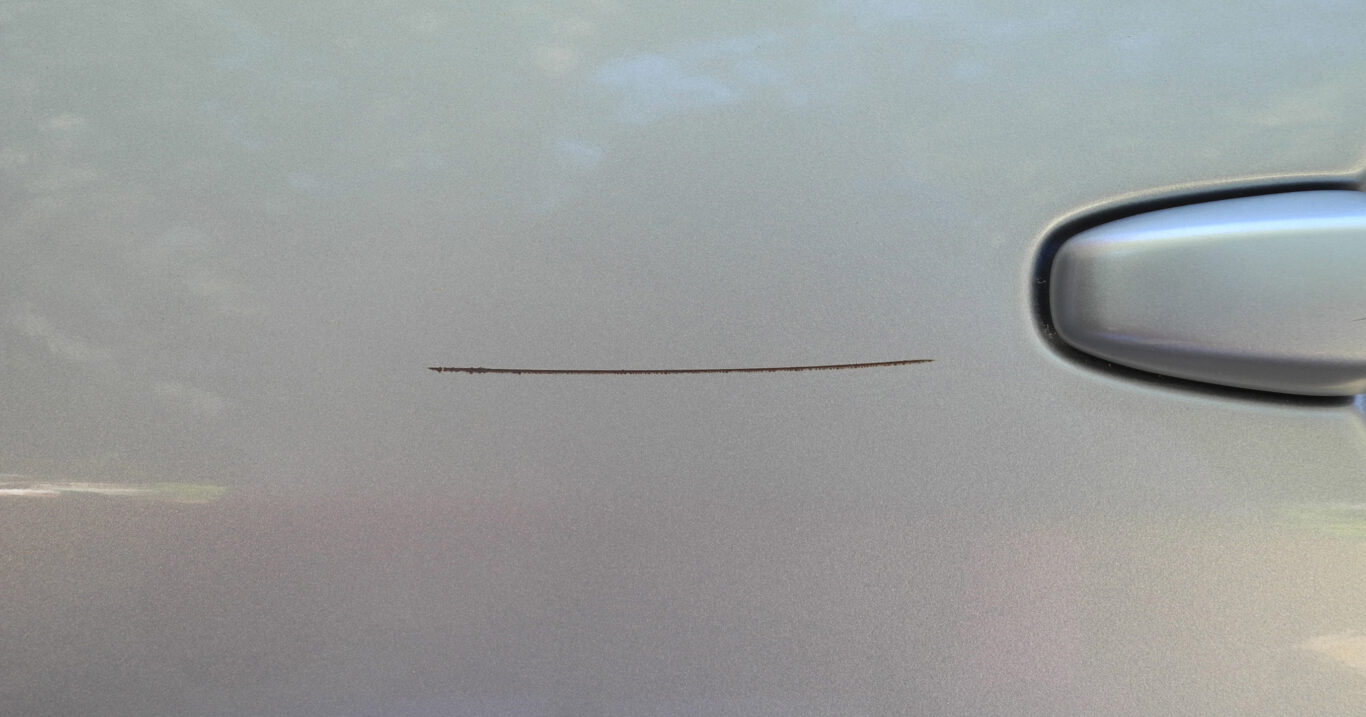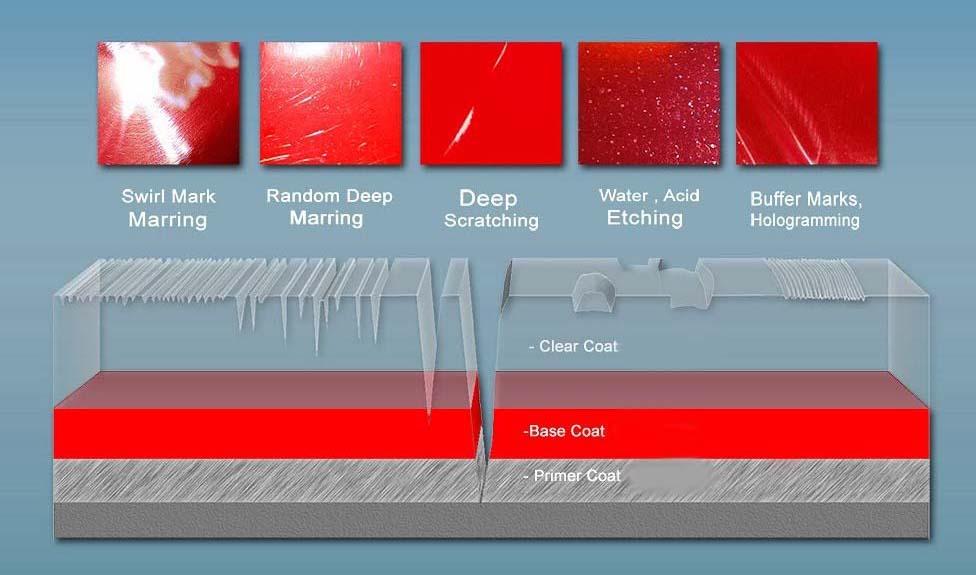
What is a Scratch?
The more you know about a problem, the better equipped you are to solve it.
We know our customers pretty well. You put in long hours washing, buffing, polishing – maybe you even give your vehicle more attention than if it was a newborn baby (the “baby” setting on the hose is “shower”, right?). So it’s understandably horrifying to discover a ding, scratch or blemish on the paint. Look, it’s going to happen, but not every visible blemish is serious or required major repair. How can you tell? You need to look at the anatomy of a scratch.
First of All, is it Really a Scratch?
The good news is that some “scratches” aren’t actually scratches. Occasionally a painted object rubs against your paint, and when the surface of the object is softer than your paint it’ll leave a trace of material on your vehicle. This is the easiest of all to repair and can be easily thinned out and removed without mechanical means.
Less good news, is when the object is harder than your paint, causing your paint to get transferred to the other surface, causing a scratch. This isn’t technically “bad” news, because often the scratch only affects the outer layer, the top clear coat. As long as some paint colour remains in the scratch, and it hasn’t penetrated to bare metal, it may be possible to remove with sanding, buffing and waxing.
Yes – we have a scratch! (Buffable)
Determining a mark from a scratch isn’t rocket science. Marks made by rubber, plastic, or other paint usually come right off with an adhesive remover. For resistant marks, try acetone or lacquer thinner on a soft rag. For the really determined mark, remove by cleaning the area with soap and water followed by an application of a rubbing compound until the mark is gone. Each compound is different, so make sure to check the label for application directions. Buff with a clean cloth, followed by a polishing compound to remove the fine scratches left by the rubbing compound. Finish by sealing the surface with a good car wax. These superficial scratches are just blemishes in your clear coat, as you can see in the diagram posted here. When the blemish penetrates the clear coat and damages the actual paint layer underneath, that is when the repair starts to get more involved.
Yes – we have a scratch (Not-Buffable)
If the defect is a real scratch, we determine if it extends below the surface of the paint and into the primer, or worse- the bare metal. If most of the scratch affects the clear coat layer, we are able to use mechanical means to repair it. This is where the amateur detailer should proceed with caution, because if sanded or buffed with too strong of an abrasive you could break through the clear into the layer of colour beneath, requiring a re-spray of the area. If your scratch can’t be buffed out becuase it extends below the clear coat, you need:
A Professional Scratch Repair
If your scratch goes into the primer, we use our database to match the colour of the original paint, sand and prep the affected area, prime and re-spray the whole panel and then clear coat over top of it to give it a factory finish. This is something that can’t be done safely and effectively at home and should really be sent in for a professional job. Believe it or not, it is much more affordable than you might think. Just send us a note and we can give you a custom quote.
Take a look at the diagram above and make note of how deep each type of scratch and swirl goes into the bodywork. Anything in the clear can be attempted at home, if you are ambitious, but anything else requires a pro. Not sure? Use our contact form and send us a photo from your phone and we can let you know immediately.
